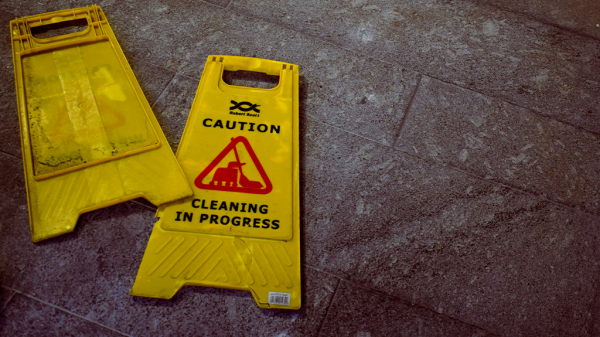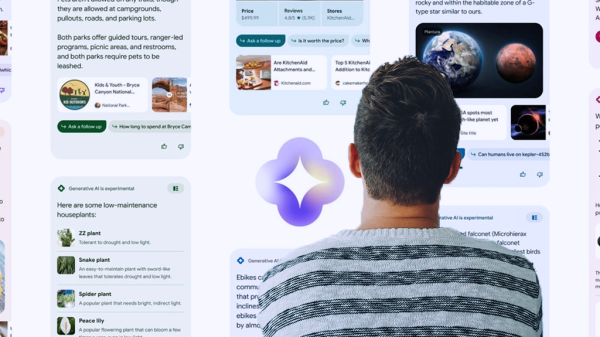Setting the scene
It’s 4:47 AM. It actually is 4:47 AM as I write this, but it’s OK. Don’t, I don’t know, dispatch journalist-wranglers with tranq darts or anything.
![]()
I work night shift. But I’m saying, imagine.
Ok Google
4:47 AM. You’re up. You’ve got a flight to catch, or work to do, or a baby to feed. All of the above! You need to accomplish all those tasks at this godforsaken hour and, like any civilized human, you would like to do it with as little impact on you and yours as possible.
Like any civilized human, your first thought is to use your tech, because that’s what it’s for.
Right? That’s why we have all the shiny plastic things. Easing our lives is what they’re for. You roll over, rub your eyes, rise from your comfy bed, mutter “OK Google…”
And the entire house wakes up.
A symphony of Googles
For the single grownups and only children in the audience, take it from someone who did a short but memorable portion of his growing up in a small house with seven people in it, three of them small girls and one a crabby male tween (hi!): that’s a freaking extinction-level event.
“Wake up the whole house” is a killing curse, especially with children. There is only so much sleep to be had in a house with children.
Interrupting it should be punishable by law.
If it were, Google would be doing hard time up Folsom way. Try it like this. A Google household of two adults (or an Apple or Amazon one; Google just happens to have the highest “good market saturation/dumb UI” ratio) might have two wearables, two phones and a shared hub.
That’s five devices, and they all answering to the same trigger phrase, all designed to be audible and run Audible. Five devices plus one “on” switch equals a nonzero chance of blanketing your home with overlapping noise every time you’d like the equivalent of a glance at your calendar.
Oops
It may seem like a nit. It will probably get fixed, since it’s such a glaring flaw. The obvious answer would be naming devices, so your wearable responds to different commands than your hub: “OK, HAL, what’s it like outside? OK, SHODAN, set an alarm for 2:30 pm.” I name all my tech after evil computers, just so they know I’m onto ‘em.
But it is a glaring flaw.
We’re talking about user interaction fail on the level of setting every light in a house to a single switch. The question isn’t “When is Google going to fix this?” The question, and it’s a big, serious question, is “will Google fix this properly?”
Context people!
It comes back to AI and context, and how one doesn’t understand the other. It’s tempting to write that off as just another kind of technical glitch. But it’s a new glitch, one built into our evolving relationship with technology.
The great dream of AI and voice control has always been “zero UI.”
Technology built on that premise is meant to integrate seamlessly into our lives; we should interact with it without noticing the interaction, the way we turn on a faucet without noticing the pipes or the water heater.
AI is a giant leap in that direction, the first big move toward digital tech becoming an ambient part of day to day life, basic as plumbing.
The great nightmare is: ever had your plumbing fail?
When off isn’t an option
I have. I was out of my apartment for days, crashing anywhere I could find while spending money I didn’t have on repairs I couldn’t afford, on terms I finished paying off years after the event. I’m not a plumber. I couldn’t fix it myself. I didn’t even know there was a problem until it disgorged itself on my carpet.
That’s the danger of ambient technology.
When our digital conveniences were limited to phones and workstations, tools we used, then hung up or turned off, their positive impact on our lives was limited, but so was their ability to do damage. The worst thing that can happen to your hard drive can’t deactivate your car.
That’s not true of AI
Lock yourself out of security, for example, and it may not just be a matter of not being able to get to your data for 15 minutes. It might also lock your phone. And your watch. And the only copy you have of your plane ticket. And, ten years down the road, your spiffy self driving AI-enabled Tesla.
By contrast, waking the kids an extra hour before breakfast might seem minor, though I’ll wager they won’t see it that way. But it’s the same problem on a smaller scale. AI tech, and AI buy-in from consumers, is advancing at a remarkable pace. At the moment, AI usability is not. That needs to be fixed, and fixed from go. AI applications need to be designed, or at a minimum updated, on the assumption that people will actually use AI as a basic, permanent fixture of their lives.
Reliability please
In short, if Google, Apple and Amazon want people to buy into AI on the scale of a home utility, it needs to be home utility convenient and home utility reliable.
Anything less will leave the robot voices on the 3D TV scrap heap of “used to be a good idea.”
#AllTheGooglesSayYea
Matt Salter is a writer and former fundraising and communications officer for nonprofit organizations, including Volunteers of America and PICO National Network. He’s excited to put his knowledge of fundraising, marketing, and all things digital to work for your reading enjoyment. When not writing about himself in the third person, Matt enjoys horror movies and tabletop gaming, and can usually be found somewhere in the DFW Metroplex with WiFi and a good all-day breakfast.













































